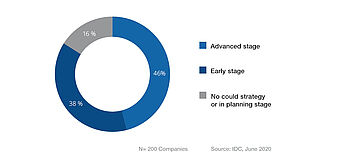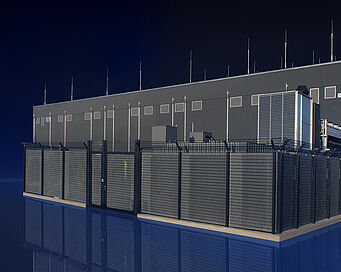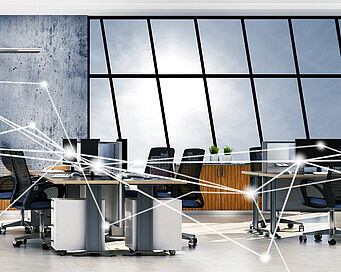Special data center types
Edge and conventional data center in a network
In addition to traditional data centers, special types of data centers are increasingly emerging. For example, due to the dynamic development of IoT, more and more Edge data centers are emerging. At the heart of this is a classic data center that a company operates at its site with common infrastructure. Local data processing is already carried out at the external points (edge) by the components used there. One example of this is sensor measurements such as those used in a Smart City for road traffic. The data preprocessed there is then transmitted to the higher-level data center. Short signal runtimes enable real-time applications.
Supercomputers as performance champions among data centers
Supercomputers are another special type. These high-performance data centers are characterized by extremely high performance and, from a technical point of view, operate at the highest possible performance level. Their processing capacity, especially the speed of computation, is many times higher than that offered by the fastest normal computer. Typical applications include weather forecasting or processing highly complex or data-intensive projects within science and research. The world's most powerful supercomputers are included in a TOP500 list and compared with each other.
Container: Flexible data center solutions
Within the special data center types, container solutions are the last to be named. These are made up of one or more modules that are already equipped with all the components required for data center operation. In this way, data centers can be set up promptly at various locations without great effort. Containers also allow existing structures to be expanded without difficulty. They can take over regular operations or be used as an Edge solution. Their use increases IT flexibility and optimizes costs.
Which data center structures does your company rely on? How will your data center develop in the future?





